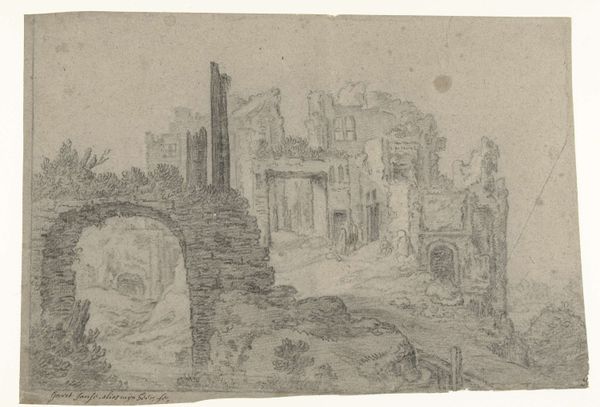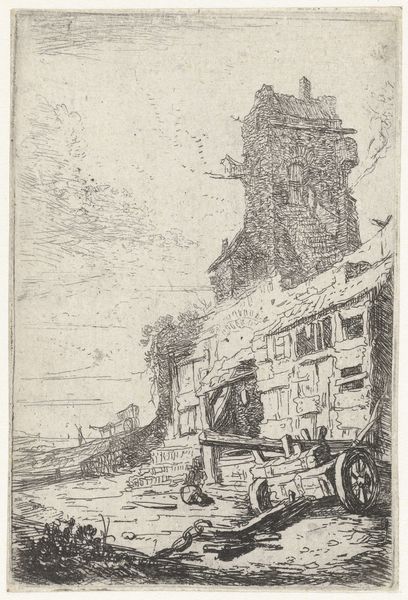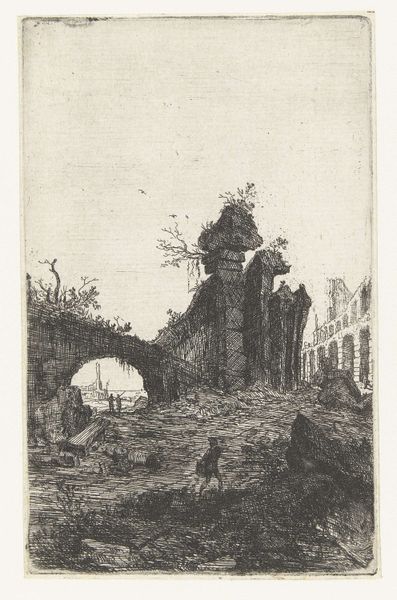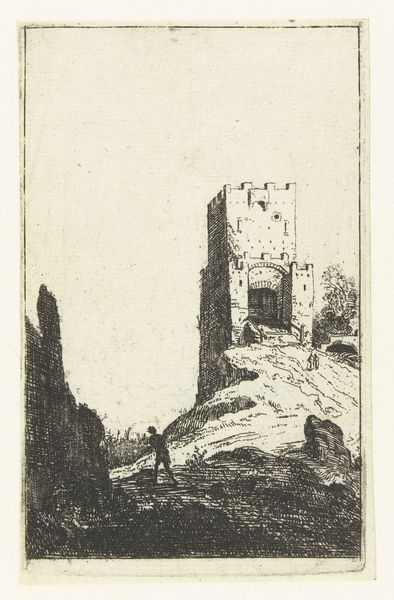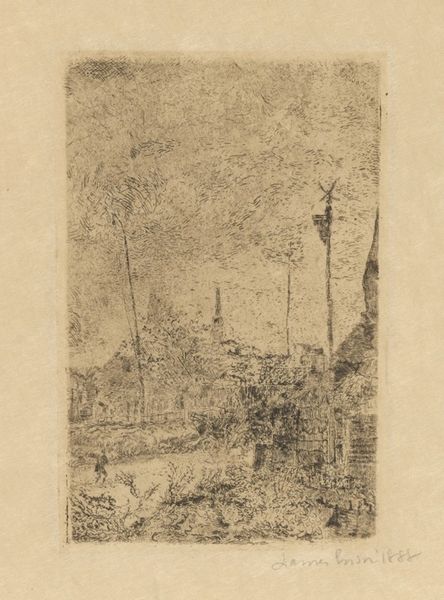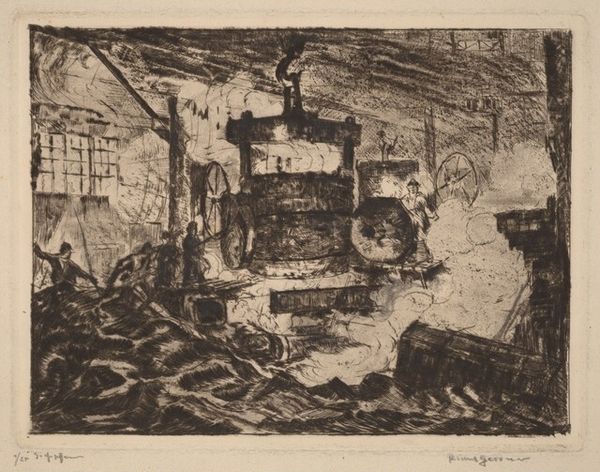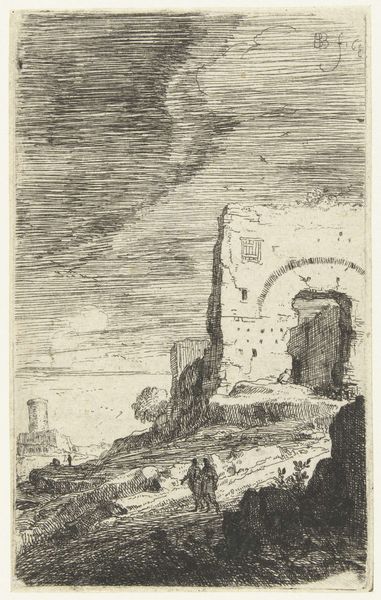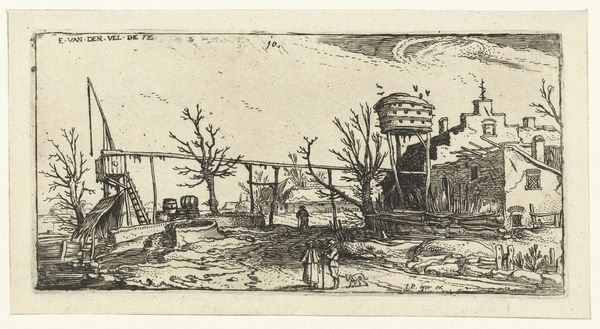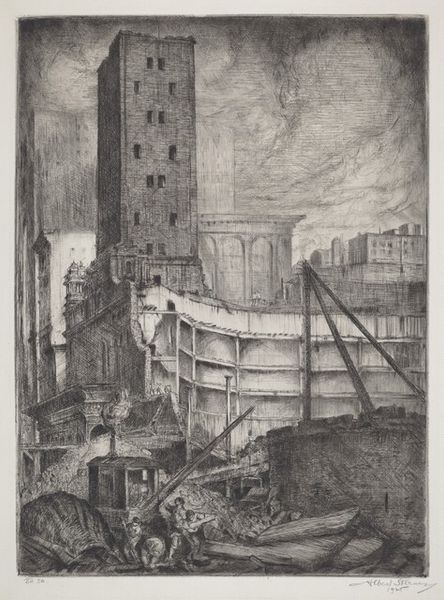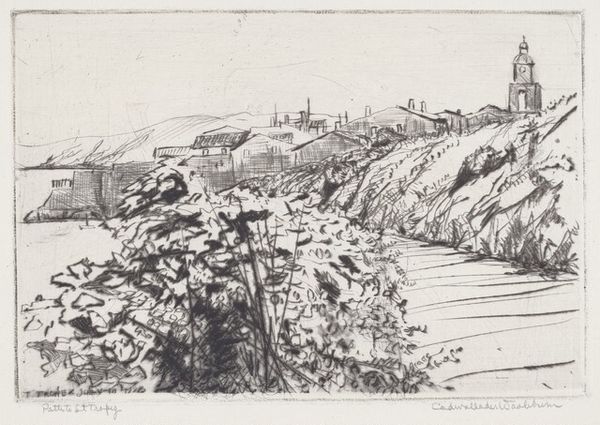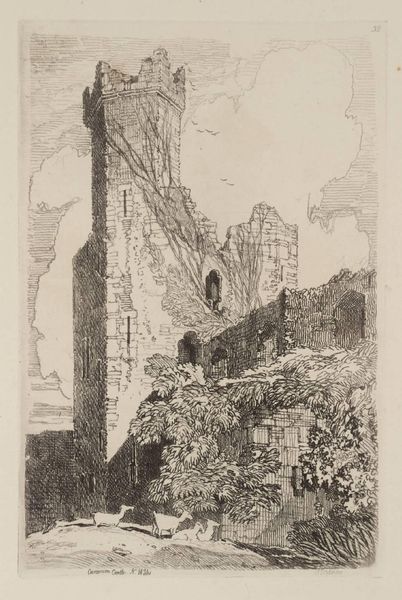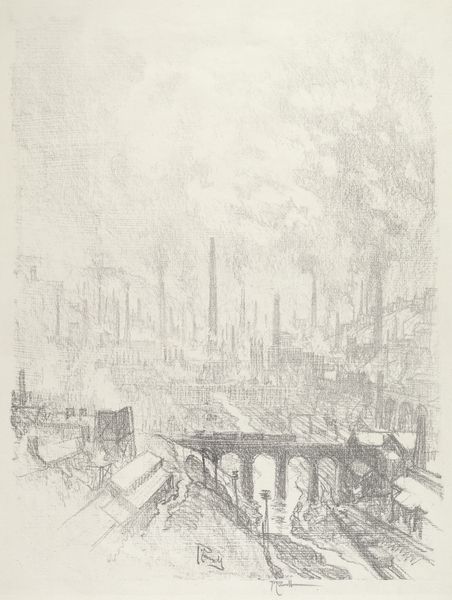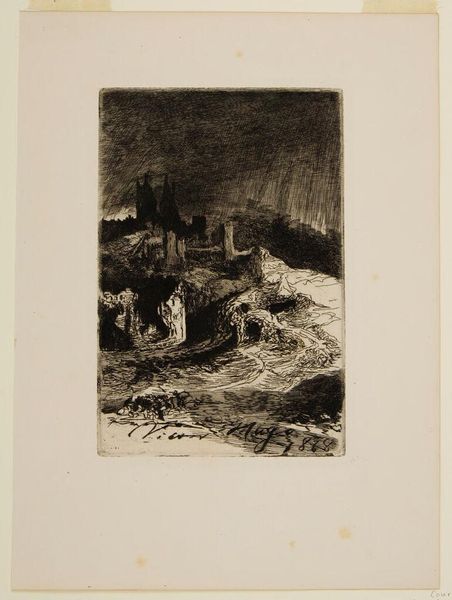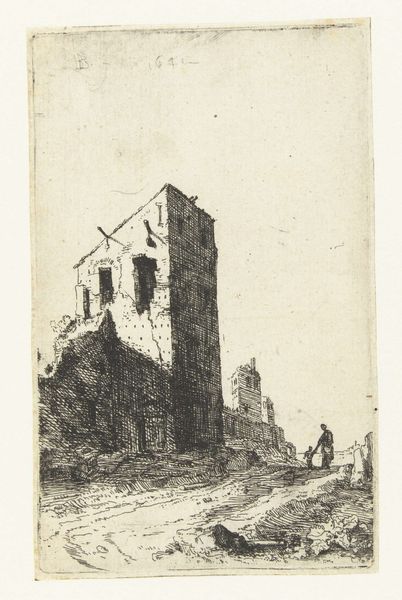
#
light pencil work
#
quirky sketch
#
pen drawing
#
pen sketch
#
pencil sketch
#
old engraving style
#
personal sketchbook
#
pen-ink sketch
#
pen work
#
sketchbook drawing
Dimensions: height 102 mm, width 62 mm
Copyright: Rijks Museum: Open Domain
Editor: We’re looking at "Ruïnes van een paleis te Tivoli," made around 1639-1640 by Bartholomeus Breenbergh. It's a detailed drawing, maybe pen and ink. I find the scene kind of desolate, yet strangely beautiful. What stands out to you when you look at it? Curator: Desolate is a good word. Breenbergh was part of a wave of Northern European artists who went to Rome specifically to depict ruins. The ruin became a powerful symbol in the 17th century. How do you think artists influenced society through such a public depiction of ruins? Editor: I guess I never thought of it that way. You're suggesting it was a conscious decision to present a "ruined" world. Why? Was it a commentary on political instability or the decay of empires? Curator: Exactly. Think about the Dutch Republic's recent independence, their complicated relationship with the vestiges of older empires and political orders. Presenting classical ruins like this allowed artists to visually process contemporary issues. It also spoke to the temporary nature of political power itself. Do you notice any signs of everyday life in the picture? Editor: There are a couple of figures on the road… almost like they are part of the landscape. Their presence reinforces the feeling of passing time, maybe the indifference of nature to human affairs. Curator: Precisely. And consider where a work like this might have been displayed - in a burgher’s home, maybe? These images offered a way for ordinary citizens to reflect on grand political and historical narratives in a digestible form. It allowed them to imagine a place in the grand theatre of politics. Editor: So, what started as a simple landscape drawing becomes a powerful statement about society and its place in history. That's incredible, I see this work from a different point of view. Curator: And that is what examining art through a historical lens should be about – challenging assumptions and unveiling broader contexts. I hope this encourages you to continue asking what messages the artist tried to convey about society.
Comments
No comments
Be the first to comment and join the conversation on the ultimate creative platform.
